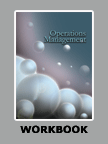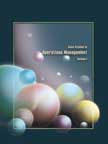Taiichi OHNO and Toyota Production System
|
|
ICMR HOME | Case Studies Collection
Case Details:
Case Code : OPER043
Case Length : 19 Pages
Period : 1998-2004
Organization : Toyota
Pub Date : 2005
Teaching Note : Available
Countries : Japan
Industry : Automobile (Two Wheelers)
To download Taiichi OHNO and Toyota Production System case study
(Case Code: OPER043) click on the button below, and select the case from the list of available cases:

Price:
For delivery in electronic format: Rs. 500;
For delivery through courier (within India): Rs. 500 +Shipping & Handling Charges extra
» Operations Case Studies
» Case Studies Collection
» ICMR HOME
» View Detailed Pricing Info
» How To Order This Case
» Business Case Studies
» Case Studies by Area
» Case Studies by Industry
» Case Studies by Company 
Please note:
This case study was compiled from published sources, and is intended to be used as a basis for class discussion. It is not intended to illustrate either effective or ineffective handling of a management situation. Nor is it a primary information source.
Chat with us

Please leave your feedback

|
|




<< Previous
Richest Automobile Company Contd...
|
Toyota's rivals themselves acknowledged the superiority of the Toyota Production
System (TPS), which was put in place in the 1950s-1960s under the direction of
the company's production chief Taiichi Ohno (Ohno). Officials from GM went on
record to say that Toyota was the benchmark in manufacturing and product
development in the automobile industry. Ford and BMW also openly acknowledged
Toyota's manufacturing superiority and often borrowed ideas from the TPS. On its
part, Toyota encouraged other companies to study its manufacturing processes and
did not deny access to its plants, even to representatives of rival companies.
Toyota was growing rapidly and had overtaken Ford (the second largest company in
the industry) in global market share in 2003.
|

|
Analysts declared that it
had a very good chance of achieving its target of 15 percent market share by
2015, which would help it displace GM as the biggest automobile company in
the world.
|
|
Taiichi Ohno
Ohno was born in 1912 in Manchuria, China. After graduating from the Nagoya
Technical High School, he joined Toyoda Automatic Loom Works (TALW) in 1932
and later moved on to the automotive business in 1943 as an assembly
manager. In the late 1940s, when he was in charge of a machining shop at the
Toyoda Group Automotive Operations, Ohno experimented with various ways of
setting up the equipment to produce items that were needed in a timely
manner.
There was a severe shortage of material in Japan at that time as a result of
the Second World War and the company did not have enough capital to carry
huge inventories. |
Therefore, the main challenge was to produce the maximum
units possible, given the financial and other constraints. Customers also
demanded a wide variety of products, and this required production flexibility.
In his experiments on these fronts, Ohno was inspired by the ideas of Henry Ford4
and Edward Deming5...
Excerpts >>
|
|










